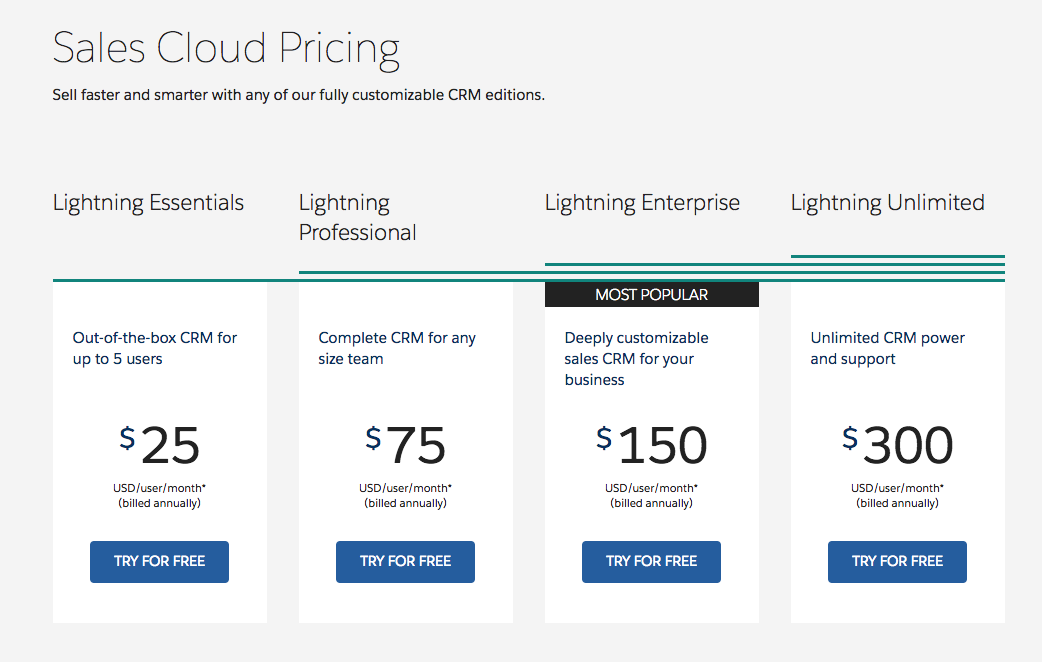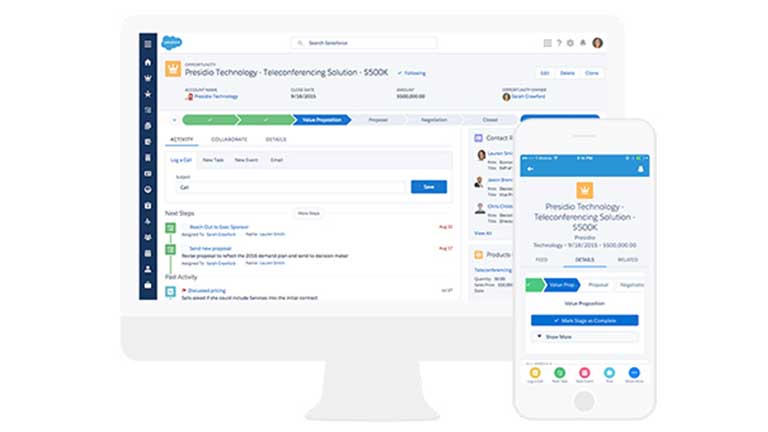SALES ENABLEMENT BEST PRACTICES
The Salesforce Sales Playbook
Winning Sales: A Page from the Salesforce Playbook
It just make sense that the top CRM software company could offer some sage advice for winning sales. For years, Salesforce has provided CRM solutions to maximise time, sales, and profitability. In this clip from Dreamforce 2015, Mark Wayland shares a page out of the Salesforce playbook. Showing that a best-in-class CRM program paired with winning sales management strategies produce top results, Salesforce’s Senior Vice President of Commercial Sales gives the formula for the win.
Wayland shares Salesforce’s game plan of segmenting the market, onboarding and training, applying visibility, and employing sales productivity tools sales enablement best practices.
Segmenting the Market Keeps Your Eye on the Ball
Salesforce understands you play a different game based on your customer’s needs. With the customer in mind, the Salesforce market has been strategically divided into 3 categories:
- Strategic & Enterprise (Fortune 2000 companies with 3501+ employees)
- Commercial & Mid Market (companies with 101-3,500 employees)
- Small & Medium (Companies with 1-100 employees)
By segmenting the market, employees are taught to specialise and hone skills specific to their department. Additionally, campaigns are run with specificity. Using Data.com, Salesforce targets companies within zip code by size, product, and selling process. Detailed targeting allows methodical campaigns to be created to reach specific industry niches. Using the forecasting capabilities of Salesforce CRM, sales managers know how many reps to assign to each project.
Lest you think sales reps may burn out from narrow markets, read on:
Onboarding and Training Cultivates Qualified Recruits
Depending on recruiting costs, benefit payout, and variables such as time spent training, lost opportunities, and the time it takes to fully learn a job, replacing an employee can cost 50%-300% of the employee’s salary. Though the range of the statistic varies greatly, one thing is certain: it is better to retain good employees than to continuously recruit new sales reps. That’s why Salesforce has designed a career path for their sales reps. Wayland references the premise of the book Moneyball by Michael Lewis, where Oakland A’s general manager created a program to develop winning players for his baseball team. Wayland says, “You can create talent from your farm system and develop employees that are highly skilled at generally a lower cost. What we have tried to do at Salesforce is create career paths for people where they’ll think about coming to Salesforce not just as a job, but they’ll look at spending a long time here.”
Reps start out nearly out of college as SDRs, short for Sales Development Representatives. These reps handle inbound leads from the website. A path through several positions dealing with progressively larger companies can lead an employee to become an Account Executive or Manager. “After 5-8 years, they land on my [Commercial Team] and after that, they know everything they need to know about sales at Salesforce. They know all of our products and systems. They know how to quote and config...everything,” explains Wayland. By developing a clear training and career path for its employees, Salesforce strives to create a sales culture of optimism while also ensuring qualified candidates as job openings become available.
Applying Visibility and Accountability Across the Pipeline Allows for Quality
Another best sales enablement practice is applying visibility for all sales functions across the pipeline. Salesforce CRM software allows each interaction with a customer to be documented. Salesforce obtains initial leads from web traffic, social media campaigns, and free trials. Those leads are then funnelled into the sales pipeline board which includes:
- qualification;
- Need Analysis;
- Proposal/Quote;
- Negotiation; and finally
- Closed/Won
Sales managers at Salesforce are able to use CRM dashboard reporting to follow reps’ deals along the sales pipeline board. It’s really important to measure every stage of the pipeline and have accountability measures all the way through,” stresses Wayland. Sales Responders are measured based on “flips.” There are dashboards and leaderboards to keep track of leads. To ensure accountability and quality, reps get credit for the flip until when it is moved to stage 2 of the sales pipeline board. Wayland’s team handles stage two and which is also measured by CRM dashboards. “Having those same sorts of metrics dashboards...with full accountability and visibility is what has allowed us to have a full pipe and a lot of velocity in the pipe with deals moving through,” explains Wayland.
Encouraging Teamwork and Collaboration with Sales Productivity Tools
Salesforce uses a sales productivity tool called Chatter to communicate with the office. Chatter, the internal messaging app available in Salesforce, allows users share and discuss data and dashboard reports real time rather than email a spreadsheet around the office. Salesforce teams can communicate with each other via Chatter both in and out of the office and across devices. The metrics and dashboards in Salesforce CRM can be discussed in Chatter and become a visible measure for sales pipeline data. “What you need to do is to have the conversation where the data lives,” advises Wayland.
The sales pipeline board in Lightning is another one of the sales productivity tools available to the sales team. It’s important to have clarity about where those deals lie along the pipeline board, says Wayland. That clarity comes from clear definitions of when a deal can be moved to the next stage of the sales pipeline and the ease in which deals can be dragged and dropped along the sales pipeline board, with totals auto-populating as deals are moved from one stage of the pipeline to another.
The dashboards and reports also create transparency and visibility throughout the organisation. Because of the common information, reps and managers work to care for their portion of the pipeline. “You want to create a culture where everyone just does it because it’s part of their job,” coaches Wayland.
It’s a sales enablement best practice to create apps to manage parts of the deal that may need extra help, says Wayland who explains Salesforce’s library of resources for reps including a DSR or Deal Support Request app. Because of the information available across the company through Salesforce CRM, tips, tricks, and knowledge can be accessed quickly by anyone who needs it.
Wayland gets only 20-30 emails per day because he uses Chatter and Chatter Groups. Salesforce has found Chatter to be one of many sales enablement best practices because reps can search company-wide Chatter groups for information that may be useful to close a deal. Unlike email, where information can be buried, all the information in Chatter is available at any time across the company. Chatter Groups can be set up around a myriad of topics. Among other topics, Salesforce has Chatter Groups that give information and strategies about competitors’ products, Chatter Groups for working with specific industries, Chatter Groups for pricing and products.
Automation and the Cloud capabilities of Salesforce CRM allow reps to works across devices, picking up on their laptop where they left off on their phone. The new Lightning user interface allows for a seamless experience across screens and dashboards.
Businesses looking to run their sales more productively can use Salesforce’s best practices to gain insight into their own company. Using CRM to reduce meeting time and getting the sales team in front of customers and out in the field is one way Salesforce meets key goals. Segmenting the market, providing a career path for sales employees, and the using the very sales productivity tools they produce are all best sales enablement practices at Salesforce.
Wayland cites the common sales statistic that 20% of a sales rep’s or sales manager’s time is spent in meetings. That’s the equivalent of an entire day sitting in meetings when sales reps could be out on the field for the win. The key is to use CRM technology to streamline non-income producing activities. Using ideas from Salesforce’s playbook could help your business develop its own best sales practices.



